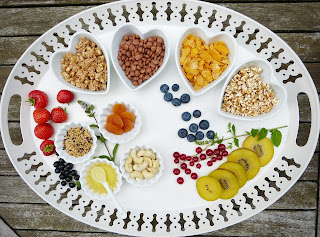Contrasted with the still exceptionally famous LCHF (Low Carb High Fat) consumes less calories, which depend on expanded fat admission and limitation of starches, the ketone or ketogenic diet goes above and beyond. The quantity of carbs that are still "permitted" to be ingested is presently actually quite low.
Just in this manner can the supposed ketosis, a
condition where the body because of absence of glucose starts to utilize fat
cells as its essential wellspring of energy and afterward keeps up with it.
As the two greatest advantages of this eating
routine, the way that it doesn't need calorie counting and that an extremely
huge measure of fat admission guarantees that we are basically never hungry is
frequently referenced. What's more, some prescribe a ketone diet to manage
glucose levels.
How does it work?
The keto diet is also called the ketogenic diet.
It is a diet high in fat and low in carbohydrates (low-carb and high-fat diet,
or LCHF diet for short). Do you now have doubts because it does not sound
logical that you need to eat a lot of fat to melt your fat deposits on the
body?
To make it clearer to you how this is possible,
we will explain how fat burning works in your body.
For our body to get energy it needs some kind of
fuel and it takes that fuel from carbohydrates. They break down into simple
sugars in the body, and glucose plays the most important role. It is the
simplest and most accessible fuel for the body. When you eat insufficient
carbohydrates, the body begins to look for another source of energy for its
muscles. In the absence of glucose, it begins to burn fat and uses it as fuel.
When this happens, you have brought your body into a state known as ketosis.
And then begins your weight loss process!
Symptoms of Ketogenic Diet
These indications are not lovely, particularly
toward the start of the eating regimen, yet they are an indication that the
keto diet in your body is beginning to show results. You might encounter the
accompanying indications:
Headache
Weakness and fatigue
Thirst
Metallic taste in the mouth and bad breath
Nausea and abdominal pain
Insomnia
Frequent urination
To help you overcome these initial symptoms of a
keto diet, you can drink plenty of fluids, take vitamins, minerals or make
protein drinks that will give you energy and relieve the symptoms of ketosis.
The vast majority of these side effects vanish
when the body adjusts to the condition brought about by ketone bodies in the
body. In case you are uncertain of the side effects, ketones in your pee might
show that you are in a condition of ketosis. This requires estimation and
testing utilizing exceptional tapes. The most solid way, notwithstanding, is to
quantify ketones in the blood.
Then again, this eating regimen has a ton of
pundits. As one of the fundamental detriments is positively the way that such
an eating regimen contains next to no fiber which is critical for solid
absorption. Hence, a ketone diet is frequently alluded to as an impermanent
answer for losing additional pounds, rather than an eating routine that would
be practical for most over the long haul.
There are also variations of the ketone diet,
which some say is a better choice, such as the vegan ketone diet. Even in this
case, the proportion of fat consumed is still very high, but the amount of fiber
consumed is usually still slightly higher.
What does Ketogenic Diet mean?
The ketogenic diet primarily means a reduced
intake of carbohydrates - 20 to 50 grams per day. Although a diet that has less
than 100g of carbohydrates is classified as a low-carb diet, such an intake of
carbohydrates will not allow your body to reach a state of ketosis.
Should you count calories when you are on this
diet?
It is attractive! You really want to know the
number of calories you really want to eat during the day to get thinner and how
to consolidate fats and proteins.
The measure of protein you really want to get
past the keto diet ought to be in accordance with your weight and tallness. The
standard is to go one gram of protein for every kilogram of weight. At the point
when you increase that number by 4, you get the quantity of calories you want
to take from protein.
The rest of the calories in the keto diet should
be fat. To determine exactly how many calories it is, you need to subtract the
number of protein calories from the total number of calories.
You will easily reach the number of
carbohydrates of 20-50g by eating fruits and vegetables, so you do not need to
count them.

